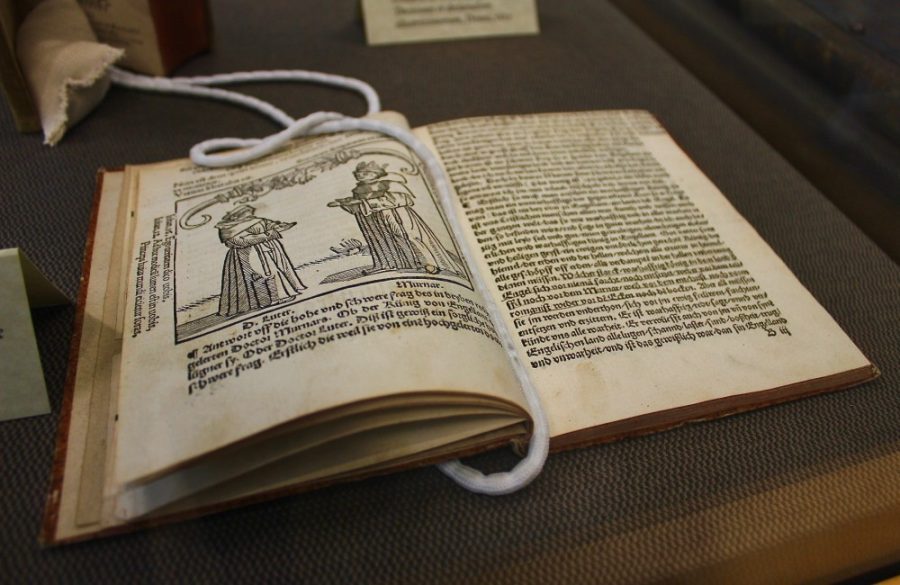From Aug. 7 to Dec. 22, the University Libraries’ Special Collections is displaying “Print and Propoganda in the Reformation,” an exhibit on the Protestant Reformation housed in the UA Main Library. The collection on display includes reformation materials, relevant artifacts and books that were printed within the first 50 years of the printing press.
The story of reformation began with a young student named Martin Luther. Legend has it that on a dark and stormy night a bolt of lightning struck near Luther on his way to university. At that moment, he swore that if he survived the incident he would drop everything in life and become a monk. After the lightning strike and much to the dismay of his friends and family, Luther followed through with his oath and entered into St. Augustine’s Monastery.
RELATED: Uncovering the ‘Retablo of Ciudad Rodrigo’
Luther spent many years in the church but soon came to find he had many disagreements with its theology. In his most famous moment, Luther is said to have nailed his “95 Theses” to the door of a church in Wittenberg. These theses laid out Luther’s arguments against the Catholic Church’s practice of selling indulgences. He believed that individuals have the ability to make their peace with God on their own without the intervention of a third party.
As Luther sought to make his voice heard, he utilized mass production of books and pamphlets to spread his ideals. Broadsides were an efficient form of media with which to create his propaganda. On a single piece of paper a caricature of the pope was printed often, accompanied by a written critique of some aspect of the Catholic Church. Through these writings, written in German and easily available due to the printing press, Luther was able to amass a large following of supporters from a wide range of classes. These initial publications by Luther sparked the beginning of the reformation, a period of internal conflict within the Catholic Church, ultimately leading to the creation of Protestantism. Unfortunately, debates between the various sides were not always civil, and many years of war extended beyond the Reformation as Protestants and Catholics fought out their differences.
Now in 2017, we are 500 years past the days of the reformation. Although, the impact the reformation had on Europe and eventually the rest of the world is profound, in one way or another affecting many aspects of our lives.
RELATED: UA’s Special Collections: History at your fingertips
According to Special Collections associate librarian Roger Myers, the process of putting together the exhibit began around six months ago. He and professors Susan Karant-Nunn and Ute Lotz-Heumann began selecting texts from the Heiko Oberman library, a vast collection of books from Luther expert Heiko Oberman, who donated them upon his death. They also started compiling timelines for exhibits to help people understand the significance of the printing press.

For those looking to dive even deeper into the Protestant Reformation, a series of talks have been scheduled around the UA campus. On Oct. 31, the 500th anniversary of Luther’s “95 Theses,” a panel of experts on Luther, will convene at the University Libraries Special Collections.
For a full list of relevant events visit the UA’s Reformation programming website.
Follow Daily Wildcat on Twitter









